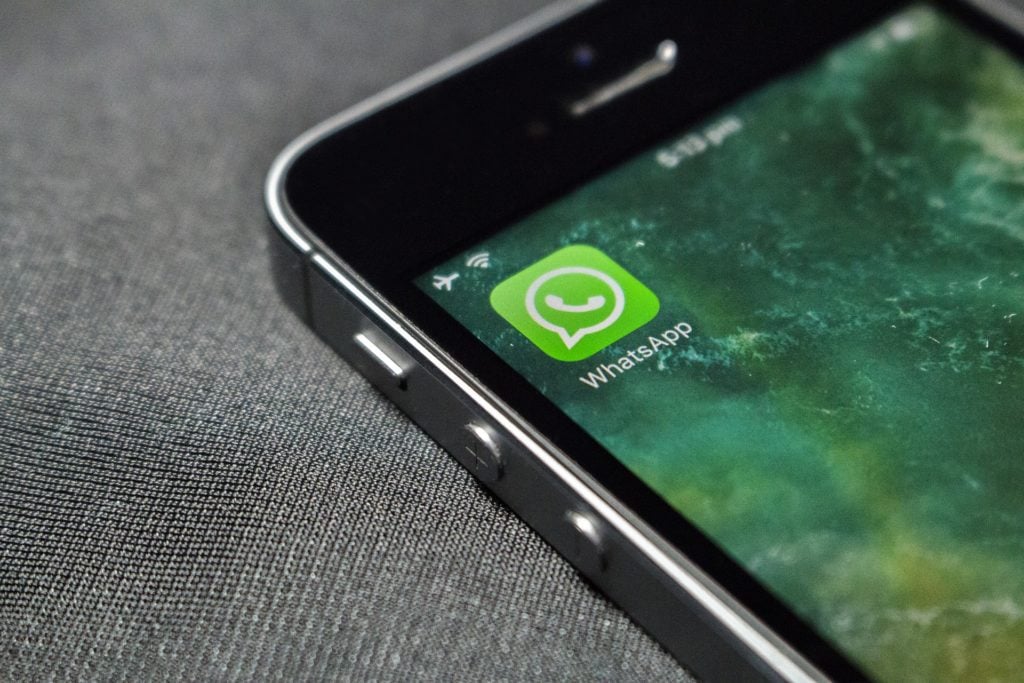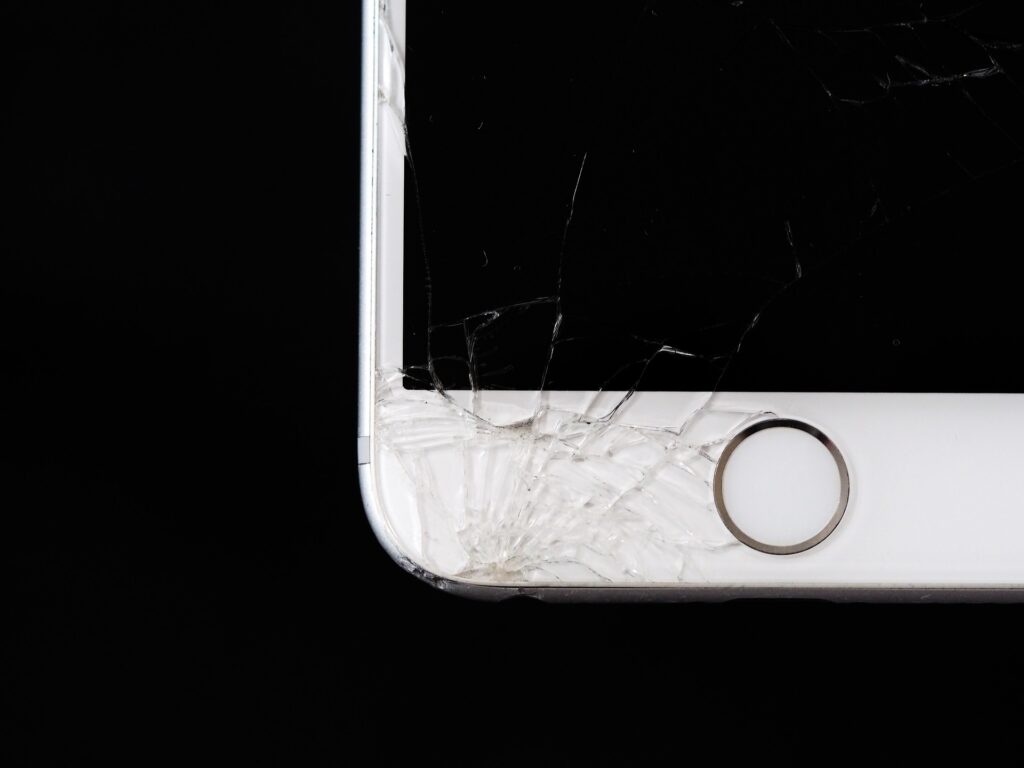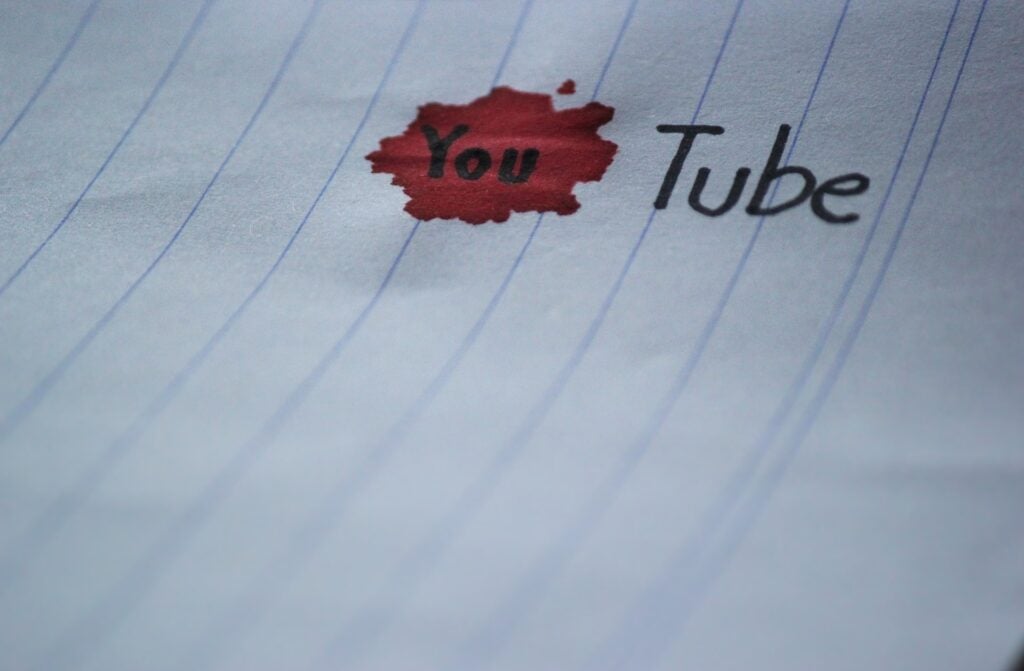Previously: Adam Butcher’s “Internet Story.”
(CW: Self-harm, suicide. )
I’ll be honest: I wasn’t originally planning on talking about the Momo Challenge — whether it’s real, what the “challenge” even is, who or what Momo is in the first place, and so on — because it’s been so very clear since the beginning that the whole thing is a hoax, or a modern-day urban legend. But in recent weeks, the tale has not only emerged yet again in a new form, but moreover, it’s become the subject of a full-blown moral panic operating on a global scale. As such, it… seems like a good time to address it now.

The thing is, there’s more to the whole Momo phenomenon than you might think — even if you, like myself, spent months brushing it off as an obvious hoax. In fact, Momo’s proliferation and growth — and how we’ve responded to it — says a lot about us as a culture. It’s not all flattering, but I think it’s important to reflect on and consider.
[Like what you read? Check out Dangerous Games To Play In The Dark, available from Chronicle Books now!]
What we talk about when we talk about Momo… isn’t really about Momo at all.
The Start Of It All
It started with a phone number — or rather, with a few phone numbers, all of which seemed to be… connected.
The numbers are believed to have initially spread across the Spanish-speaking internet via Facebook, pegged to a message asking for help. One reported number was +573135292569, which features the country code for Colombia. Another was +5226681734379, with the country code belonging to Mexico. And a third was +81345102539, whose country code is connected to Japan.
When users who had seen these numbers looked dug into them, they reportedly discovered some corresponding WhatsApp accounts — accounts whose names were all “Momo” and which all featured as their profile picture an image of a female-presenting creature with unnaturally wide eyes, stringy, dark hair, a snub nose, and an exaggerated grin.
The image is what stuck with people. Without it, it’s unlikely the story would have taken off the way it did. It’s not that there’s anything overtly graphic about it; it’s certainly not gory or violent. But it’s not comfortable to look at. It makes your stomach churn, despite its relative tameness.
Something about it just feels… wrong.
In any event, those who attempted to begin a chat with any of the Momo accounts largely found their messages to go unanswered. However, a few fortunate — or unfortunate, depending on your point of view — souls did end up conversing with… someone. And the conversations, which all took place in Spanish, were, by all accounts, incredibly disturbing.
No one knew who was on the other end.
No one knew who or what “Momo” was even supposed to be.
But Momo was suddenly there, and Momo was seemingly cursed.
Much of the Momo story is unverifiable, with the early timeline in particular presenting some issues. The discussions surrounding Momo that began in July of 2018 position it as something that had been firmly established by that point. However, I haven’t been able to locate anything specifically tying either the name “Momo” or the phone numbers to the image itself prior to July 10, 2018. Even more oddly, though on and in the days immediately following July 10, tons of Momo-related content hit the internet. A variety of short videos arrived on YouTube right on July 10, for example; some of them simply spoke about the legend, while others actually showed text message conversations held with one of the phone numbers associated with it. Additionally, a few Facebook posts dated July 11 through the 15 addressed some questions surrounding the legend and its phone numbers. Without warning, Momo was everywhere — but with no explanation of how or why it had gotten so big, so quickly.
I’m not entirely sure what to make of this. It’s possible that I haven’t been able to find anything dated early than July 10 because of the language barrier, or else because the Facebook posts purporting to share the numbers are private, rather than public. Still, though — it’s… odd.
On the English-speaking internet, meanwhile, the image began circulating at the same time as this explosion of the story on the Spanish-language — although the name “Momo” wasn’t always paired with it. On July 10, for example, a denizen of the r/Creepy subreddit posted the image now identified as Momo, but without any context whatsoever. The post was titled simply “.” and presented without comment (although the Redditor did later say that they had found it “in a Facebook page about memes”). YouTuber Reignbot’s examination of “the Momo situation,” as she termed it, followed on July 11 as one of the first extensive dives into the whole thing.
Regardless, though, we do know one thing for certain: Momo cannot have existed prior to 2016.
During the initial burst of Momo-related activity, it quickly became clear that the image itself wasn’t a photograph of a real person, or even a Photoshopped version of a photograph of a real person: It was a photograph of a sculpture.
Created by artist Keisuke Aiso (not Midori Hayashi, as early reports erroneously stated), who is the mastermind behind Japanese special effects company Link Factory, the sculpture is titled “Ubume” (“姑獲鳥”), or “Mother Bird.” In Japanese folklore, an ubume is a type of yokai that’s born when a mother dies giving birth; however, the word is written with characters that translate directly to “child-snatching bird,” making the sculpture a literal interpretation of the yokai’s name.
“Mother Bird” was exhibited at Tokyo’s Vanilla Gallery in the summer of 2016 as part of the Ghost Gallery III show — which, as you might imagine, was heavily Instagrammed during its run. And every single image purporting to depict “Momo” is a cropped photo of “Mother Bird” swiped from social media posts published while Ghost Gallery III was on display.
For a legend that was debunked so quickly and thoroughly, Momo has had a surprising amount of lasting power. But then again, maybe that’s because the panic surrounding the Momo story isn’t actually about whether Momo herself is real.
It’s about whether everything that’s supposedly being carried out in her name is.
Variations On A Theme
The Momo story has circulated in waves — which, although the beginnings of the whole thing remain obscured, has made it relatively easy to track the legend’s evolution,
The initial version — what I usually think of as WhatsApp Variation 1, which circulated in the middle of Summer 2018— was actually quite simple: If you managed to get in touch with Momo, all you’d receive would be weird and disturbing text messages. According to most accounts, these messages could include taunts, insults, insinuations that whoever was on the other end had access to your personal information, and images that most people classify as NSFW or NSFL.
The “game” or “challenge” aspect of the legend — what I call WhatsApp Variation 2 — didn’t come around until later. In this version, which was established in South America by the end of July and cemented in the United States by the middle of December, Momo didn’t just send you weird messages; she challenged you to perform a series of increasingly dangerous tasks and actions, culminating in self-harm and eventual suicide.
The third version of the story, which began circulating in early 2019 and really took off in February, took the “challenge” aspect established in the second version and combined it with another trending parental fear: The disturbing video content making its way past YouTube’s filters onto the YouTube Kids app. In this version, it was said that Momo had supposedly been spliced into YouTube videos targeted towards young children: Midway through the video, she would appear and instruct kids to do something harmful, either to themselves or to someone else; what’s more, Momo threatened to hurt or kill the kids or their families if they didn’t comply with the instructions or tried to tell anyone about the video in which she had appeared. For obvious reasons, I refer to this version as the YouTube Variation.
WhatsApp Variation 1 is relatively harmless. It’s akin to the kinds of manufactured “cursed phone numbers” that exist purely for entertainment purposes. Sure, you might see some gross pictures or deal with some verbal abuse, but if spooking yourself out is an enjoyable pastime for you, then you’re the target audience for this version.
WhatsApp Variation 2 is more insidious. This version is when the moral panic started to pick up; fearing for their children’s lives, parents began warning each other to monitor their offsprings’ online activity to make sure they weren’t interacting with Momo or carrying out harmful actions at her urging. It also started to have real life repercussions: News reports from a variety of countries concerning preteens and teenagers who had died by suicide suggested that the so-called “Momo Challenge” had something to do with these horribly tragic deaths, while police departments and other authority figures officially warned parents to be on their guard. The implication wasn’t that there was a ghost at work, but that a disturbed individual or group of individuals — actual people — were preying on impressionable young people. In WhatsApp Variation 2, the story is no longer “just for fun,” and the target audience isn’t people who like horror. Instead, it’s designed to inspire panic in entire communities, but particularly in parents, caregivers, and authority figures. It sows chaos.
The YouTube Variation, which has continued to be primarily shared by and targeted at parents and authority figures, is the worst of the lot. It takes everything that was awful about the secod WhatsApp version and kicks it into high gear by putting very young children who truly do not know better at the center of the story. This, in turn, immediately triggers every protective instinct adults have — and as a result, the story has exploded, spreading at a breakneck pace with a kind of mania we’ve seen before, notably during the Satanic Panic of the 1980s.
So, what’s the truth of the matter?
It’s… complicated. That’s what it is.
What We Talk About When We Talk About Momo

One aspect of the Momo story is true: You can, in fact, text Momo, as described in WhatsApp Variation 1. But are any of the other thing pegged to the legend actually happening? No — or at least, not specifically involving Momo. This isn’t to say that there isn’t some real danger lurking underneath the story somewhere; however, our fears about it may be misplaced, and our reactions aimed at the wrong target.
Is the Momo Challenge as detailed in WhatsApp Variation 2 actually a thing? No. It is sadly true that a number of preteens and teens died by suicide during the summer and fall of 2018 while the initial versions of the Momo story were at their height, including a 12-year-old girl in Argentina, a 12-year-old and 16-year-old in Colombia, and a 13-year-old boy in Belgium. But although many news reports stated that it was believed the children died due to participation in the “Momo Challenge” aspect of WhatsApp Variation 2, there is no solid evidence corroborating that belief.
Like the so-called Blue Whale Challenge before it, the Momo Challenge “suicide game” isn’t actually a thing — it’s a fiction we tell ourselves to make sense of a string of tragedies that seem, to the outside viewer, so senseless. And it conveniently absolves us of having to examine real issues, like how our society still stigmatizes mental health, how it makes access to mental health services so difficult to access, and what we could do to advocate for mental health awareness and support. It allows us to wring our hands about a non-existent problem instead of forcing us to deal with the real ones.
Kids and teens deserve better than their fears, depression, anxieties, and other complex emotions being reduced to an internet challenge.
And what about the YouTube Variation? Is Momo actually appearing in YouTube videos target at even younger children and coercing them into performing dangerous and deadly actions? Again, probably not. Despite the widespread discussion surrounding these alleged videos, there are really no verifiable reports from people who have actually seen them.
But YouTube Kids does have a problem — and it has for some time. The spotlight only just turned to it in 2017, when two separate reports from the New York Times and writer James Bridle on Medium highlighted not just the weird, trippy, algorithmically-generated videos starring characters like Peppa Pig, Spider-Man, and Frozen’s Elsa of Arendelle that easily make their way onto both YouTube at large and the YouTube Kids app specifically, but the truly disturbing videos featuring these kid-friendly characters obviously made and uploaded to the platform with malicious intent — videos showing Paw Patrol characters dying in terrible accidents and Peppa Pig getting literally tortured during a trip to the dentist.
These videos look like regular, kid-friendly videos; they don’t become terrible until some minutes in, long after most parents and caregivers believe they’ve given it a good enough look to sign off on allowing their children to watch it.

Several weeks following these two initial reports and the subsequent widespread coverage of the issue, YouTube did purge a large number of videos and accounts involving this kind of content. But there’s only so much YouTube (and, y’know, every other social media platform out there) is willing to do about the problems plaguing it; their efforts to crack down on these problems usually come too little, too late, and typically only after they’ve gotten too big to ignore anymore. What’s more, they’re often highly imperfect while simultaneously being mere band-aids instead of lasting solutions.
It has, unsurprisingly, left may parents and caregivers wary of allowing their children access to the platform. Heck, YouTube videos aimed at children were recently discovered which have instructions for how to die by suicide spliced in. They didn’t feature Momo, but the fear about the alleged Momo videos has a very real basis. And, much like the hand-wringing adults with the non-existent Momo Challenge, the people who have the power to do something about it — YouTube itself — continually puts the onus of weeding out this kind of content on viewers to report it instead of coming up with lasting solutions themselves.
Here’s the thing:
Momo isn’t the threat. Momo is our scapegoat — it’s what we’re heaping all our fears about the actual threats on top of because it’s a freakily identifiable target. It gives form to something nebulously terrible — an evil so large and expansive that we don’t know how to fight it, but also can’t be bothered to figure out. As Taylor Lorenz wrote at the Atlantic on Feb. 28, “These stories are only ever a distraction. They offer false reassurance and an easy fix to the wrong problem. If you can protect your child from the Momo challenge, the thinking goes, you can protect them from bad things on the internet. Unfortunately, maintaining kids’ safety online is a much more complicated and delicate task.” It’s not simple, and when we ignore it because it’s too complex, we fail.
Although the stories themselves aren’t true, the issues — the fears — they address are. In that sense, Momo really is a classic urban legend: It’s a tale with a wide variety of variations that deal with our anxieties about the world. As folklorist and Committee for Skeptical Inquiry research fellow Benjamin Radford said recently to Rolling Stone, “There’s a kernel of truth to [online suicide challenges], in that cyberbullying does happen. Sexual extortion does happen. These things are real, and they do happen. So that makes it plausible to parents and school administrators.”
Momo is the Babysitter and the Killer Upstairs.
Momo is the Hook.
Momo is High Beams.
Momo is what happens when we misplace our real fears.
***
The sculpture that became Momo is gone now, by the way. According to the artist, who recently spoke with the Sun, it “was never meant to last”; the materials “Mother Bird” was made of rotted, so he threw it away.
And, to be honest? That’s kind of comforting. “The children can be reassured Momo is dead,” said Aiso. “She doesn’t exist and the curse is gone.”
Momo can’t hurt us.
It’s time to focus on the things that can — and what we can actually do about them.
***
Follow The Ghost In My Machine on Twitter @GhostMachine13 and on Facebook @TheGhostInMyMachine. And don’t forget to check out Dangerous Games To Play In The Dark, available now from Chronicle Books!
[Photos via Webster2703, StockSnap, MorganK/Pixabay]